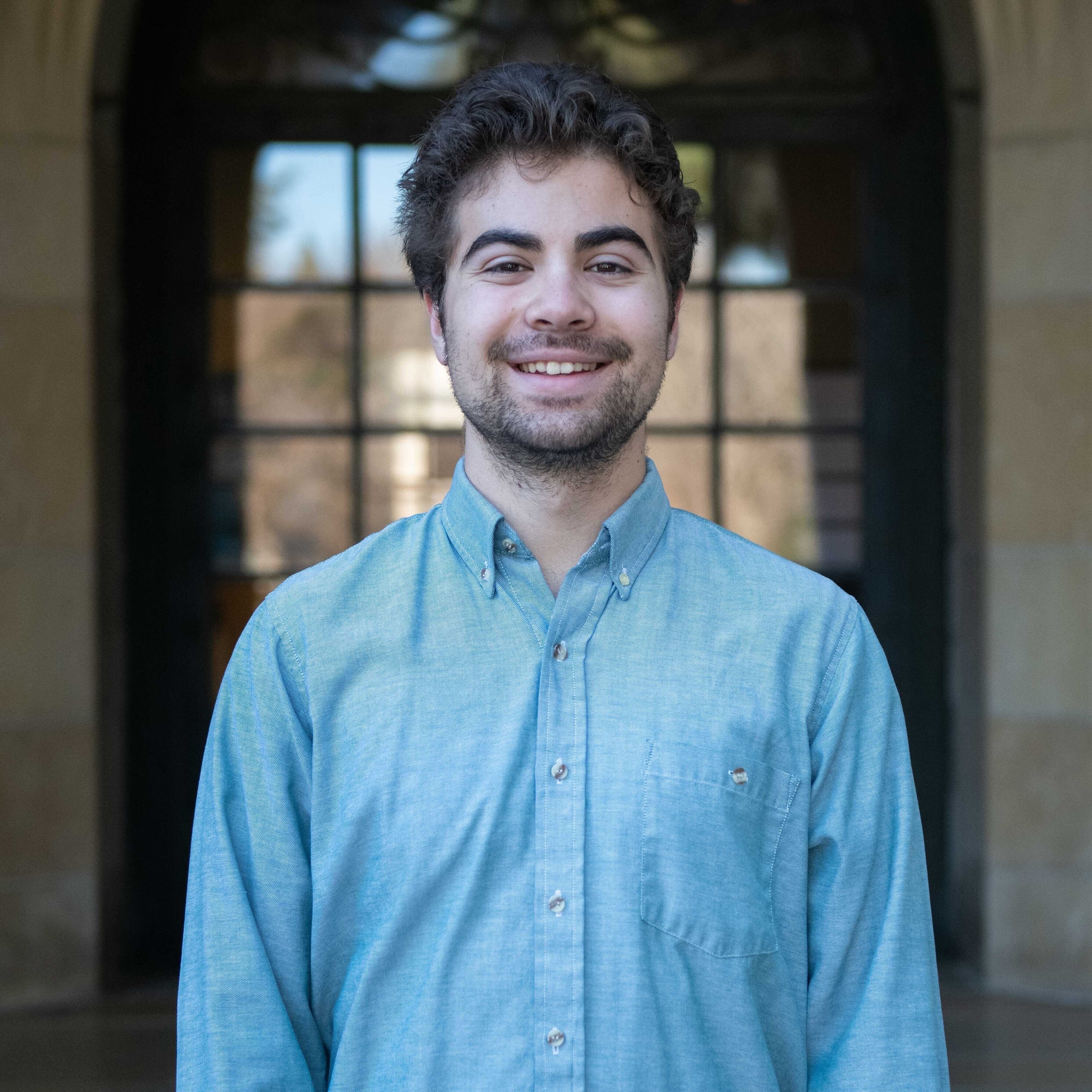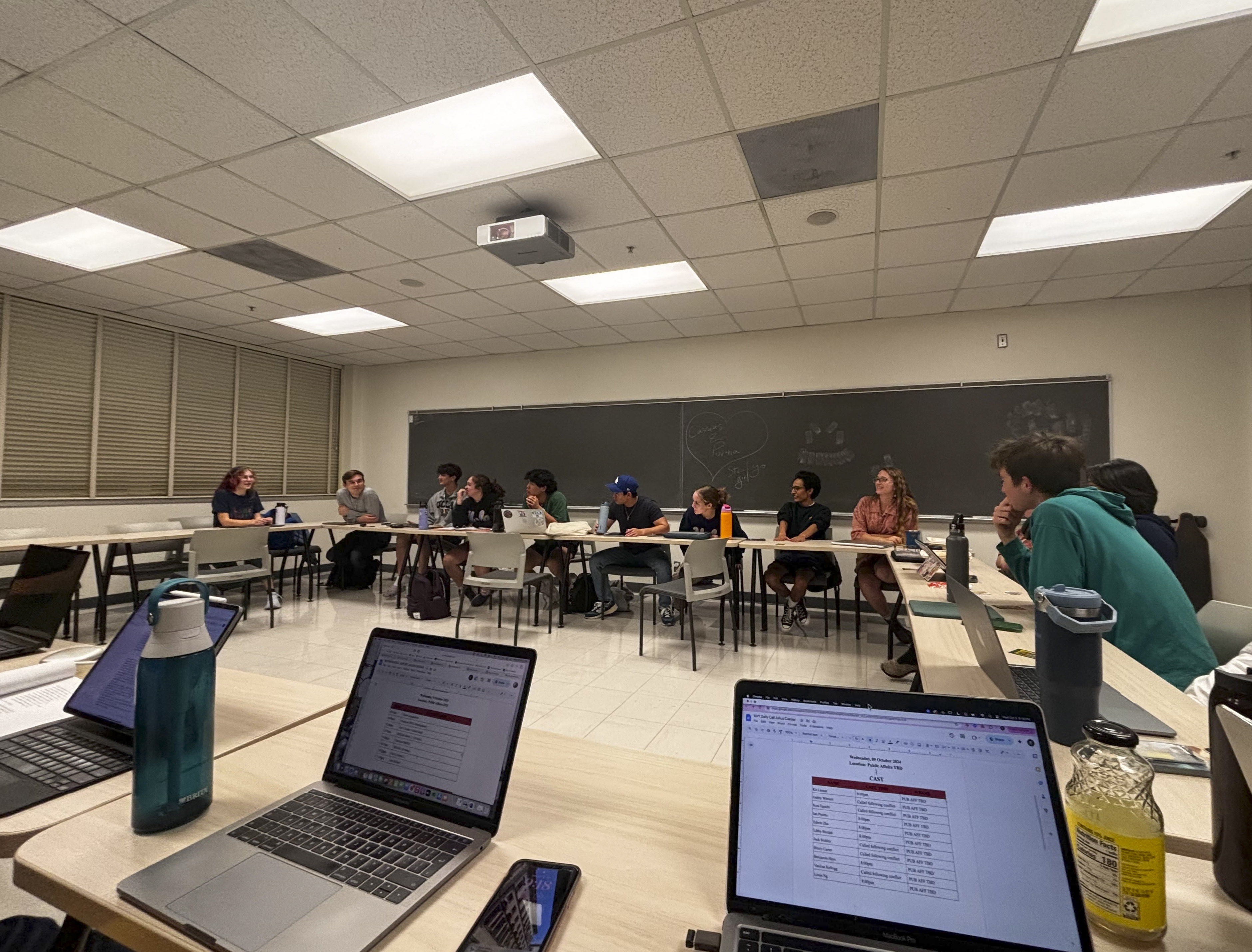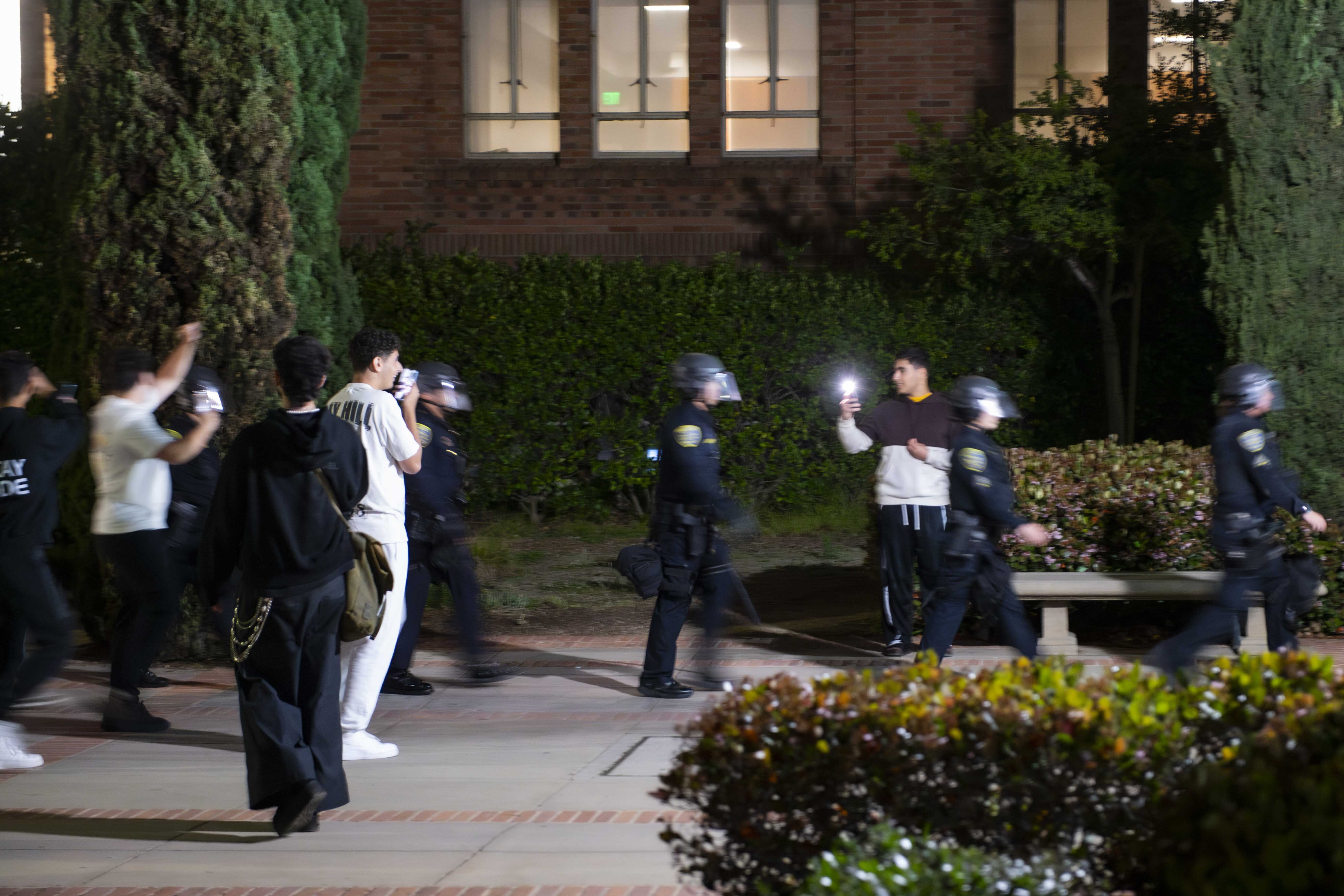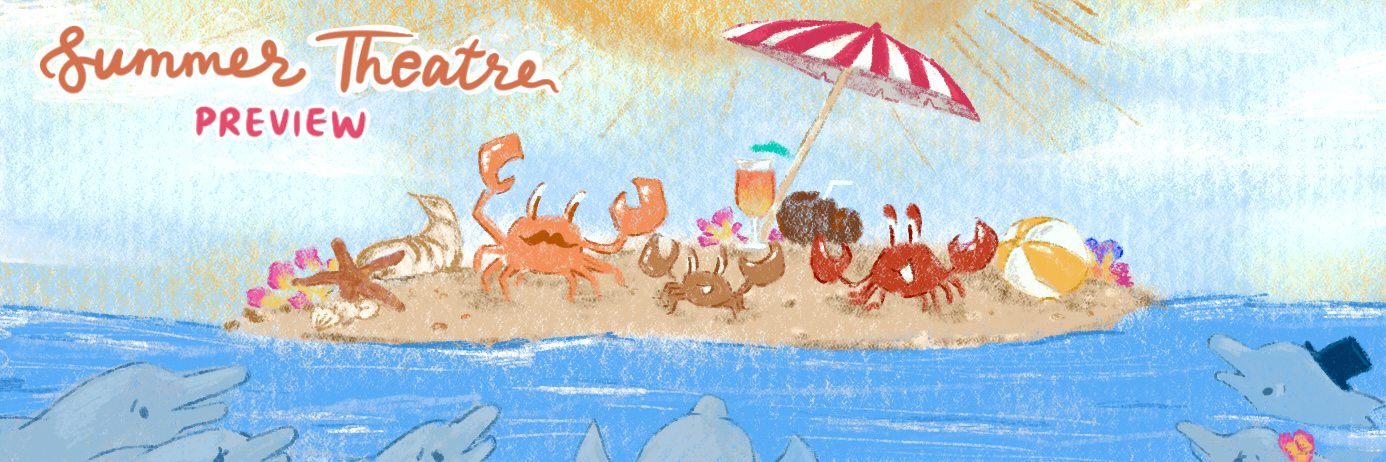‘The Midnight Dreary’ immerses audience in reimagining of Edgar Allan Poe classics
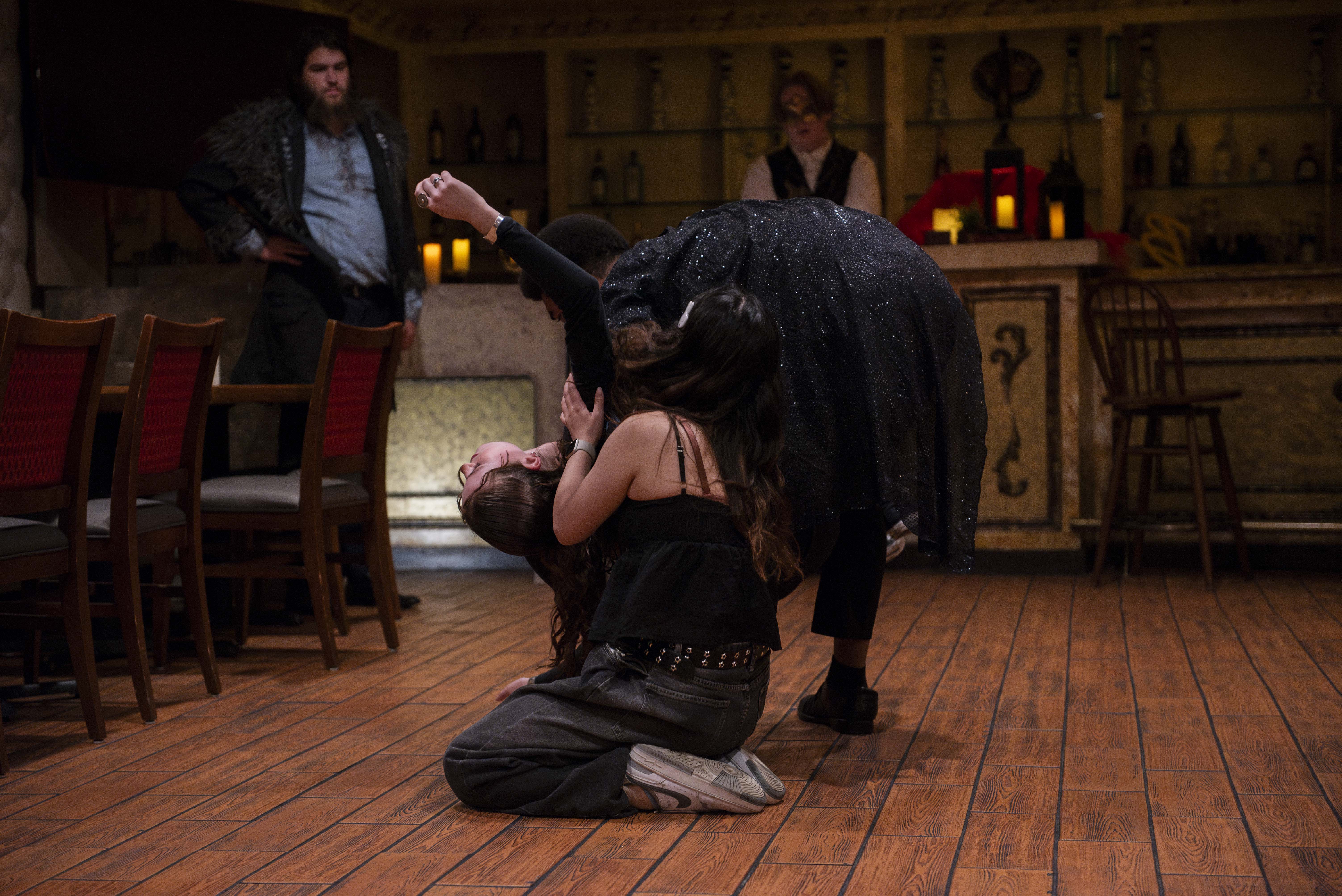
Cast members of “The Midnight Dreary” engage in the play’s fight scenes featuring stories by Edgar Allan Poe. (Anna Dai-Liu/Daily Bruin senior staff)
This post was updated Dec. 6 at 3:14 p.m.
Audience participation, death-like animations and betrayal in a dimly lit tavern all came together in “The Midnight Dreary” – a play inspired by the writings of Edgar Allan Poe.
The student-run production, which featured direct text from Poe stories including “The Cask of Amontillado” and “The Tell-Tale Heart,” – as well as song, dance and projected animations – blurred the lines between actors and spectators as crowd members were invited to partake in the show. The production ran from Nov. 14-16 at Byblos Mediterranean Restaurant and Hookah Bar in Westwood, converting its main dining and dance room into an immersive tavern-style theater.
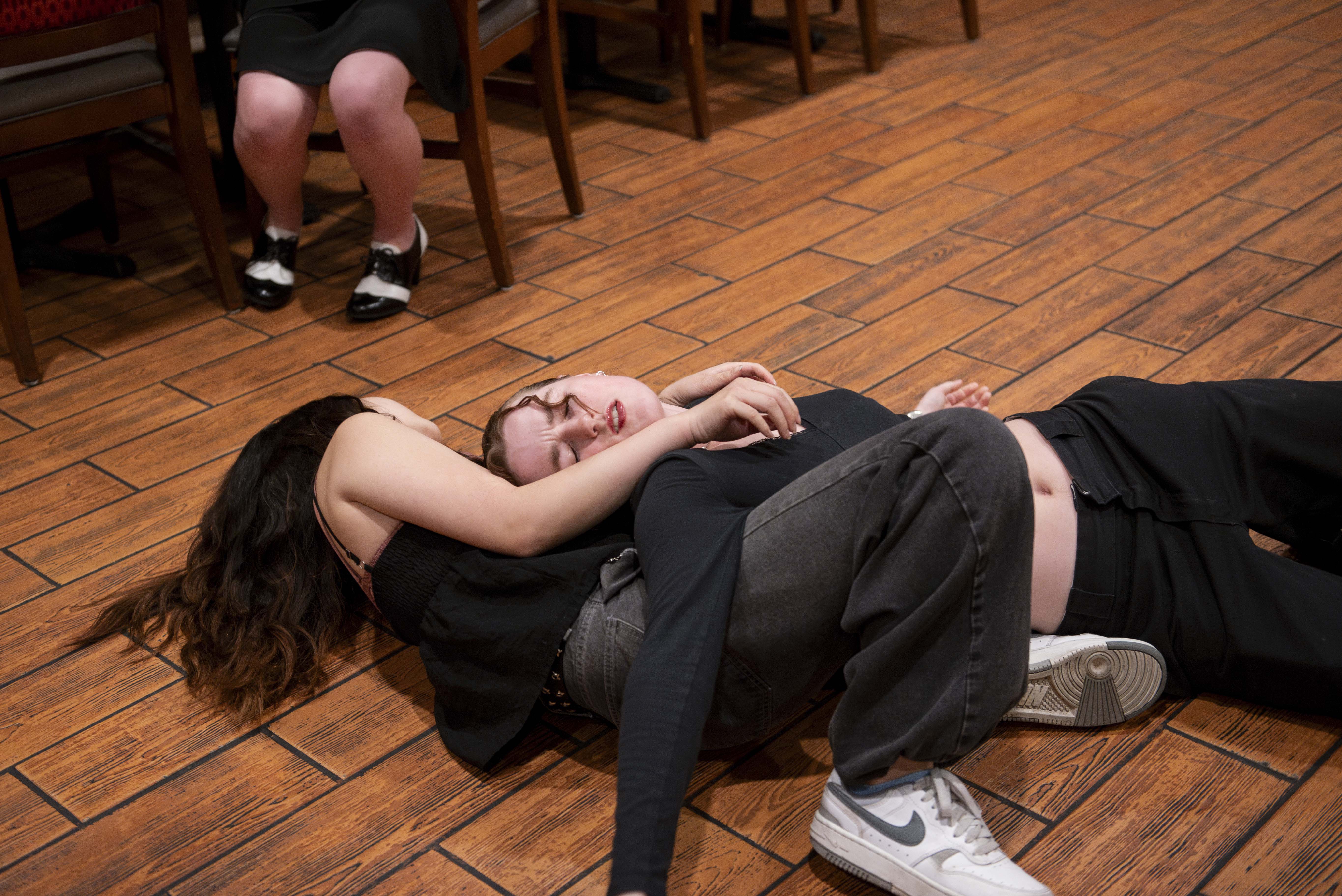
Ben Yawn, the production’s playwright and producer, said he came up with the idea for the play during the COVID-19 pandemic and attempted to produce the play several times. However, logistical issues stood in the way, he added, until a UCLA film alumnus offered the space of Byblos for the production.
Yawn, a third-year theater student, said he wanted to explore how to affect all of the audience’s senses through immersive theater.
“I took a sensory theater class which talked about how theater, especially in western cultures, is predominantly sight and sound oriented because we deem those to be ‘proper senses,’” he said. “But really, our strongest emotional senses are smell and touch.”
As the crowd entered the tavern through red curtains draped over the entryway, cast members encouraged the audience to don cabaret style masks while classical music played in the background. Ben Cole, a third-year theater student who played Montresor, a character inspired from “The Cask of Amontillado,” tended the bar and welcomed audience members as they entered.
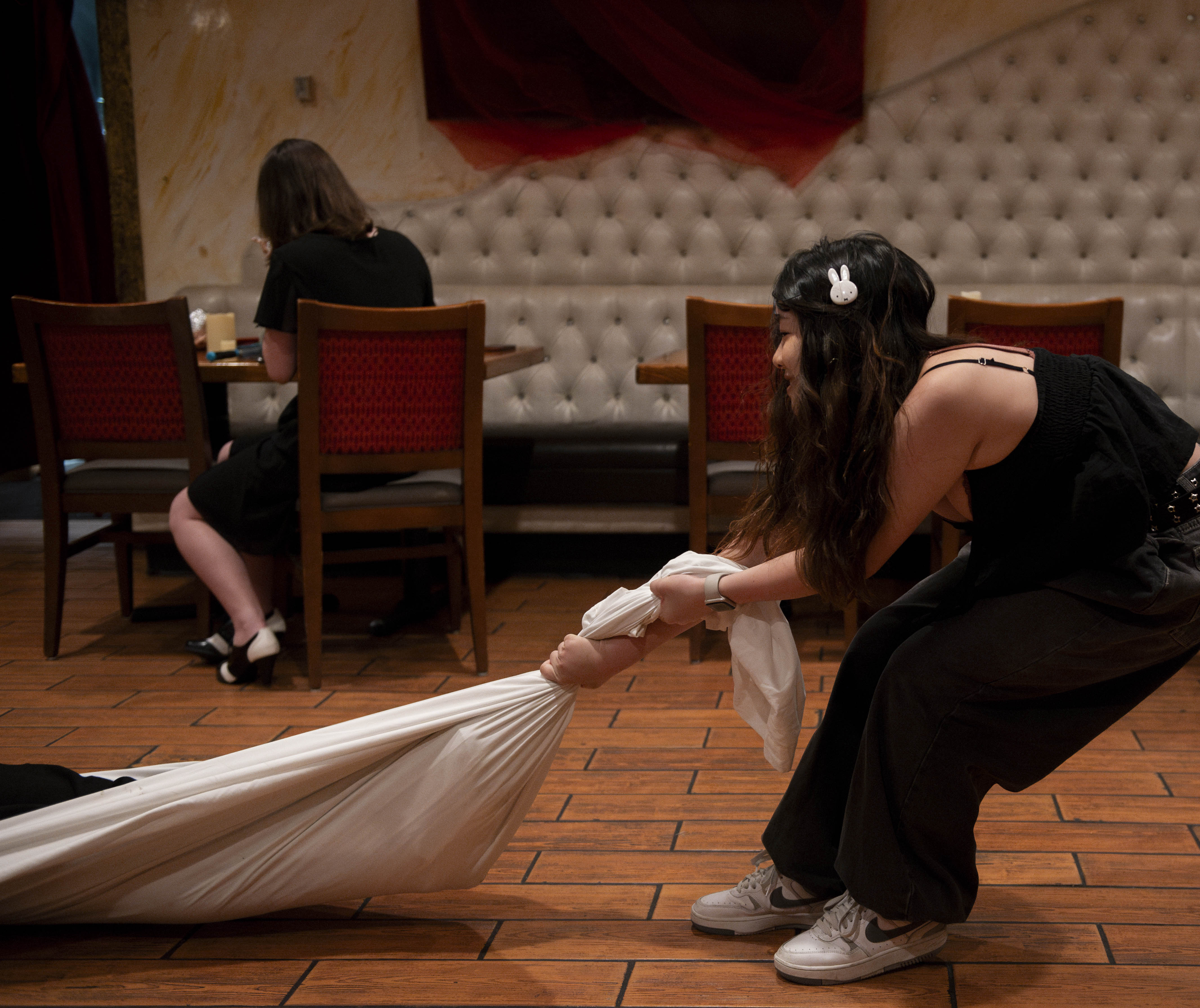
Audience members were asked to volunteer as part of the production, assuming characters or knocking on the table to create different sound effects – in one case, a horse’s hooves.
“One of the reasons I love Poe is because his imagery is so strong … every word is so particularly chosen,” Yawn said. “That’s a perfect thing for me to take from – to try and make something really sensory driven.”
During “The Cask of Amontillado,” the final story of the night night, audience members were asked to bring the foam bricks on their tables to Montresor, which he used to entrap his friend Fortunato in the catacombs of his house, then dropping his torch and leaving Fortunato to die.
Kimmy Miller, the production’s director and a second-year theater student, said this was her first big directing project and she was thrilled to bring Poe’s imagery to life. The point of immersive theater is to blur the lines between what is real and what is not and to transport the audience into the performance, Miller added.
“I don’t feel like I’m in a theatrical setting, which is the point of immersive theatre – to feel like you’re in another place,” she said. “You’re not witnessing a performance – you’re actually witnessing real life.”
Yawn said he loved the flexibility offered by self-production – which involved going home and borrowing props from his high school.
“Necessity breeds invention, and we’re always trying to figure out how to do so much with so little,” he said. “That makes collaborating awesome.”
However, putting the show together was not without its roadblocks, Yawn said. Being completely student led and self-produced meant dealing with limited resources and less time in the performance space than if the department produced the show, he added.
Additionally, the entire cast came early and stayed after the show to help set up and take down the set before and after every performance, Yawn said. The first few days of their one-week rehearsals they had in the restaurant were consumed by trying to correct technological malfunctions, he added.
Eventually, all the pieces that made the production possible came together, Yawn said, adding that the show sold out for all three nights. Over the course of the production, the cast developed a tight-knit bond, which made rehearsals enjoyable and the production possible, Miller added.
Cole said they wanted to be a part of the play ever since Yawn mentioned it, adding that his excitement drew them to the project. Miller led a fun rehearsal room where the cast benefited from having both the director and the writer in rehearsals, Cole added.
“Ben and Poe’s writing is so captivating that it’s just been fun to build a world where there isn’t one – make people see an old Gothic manner in this bar where there isn’t one,” Cole said.
Manuel Sabido, a third-year theater student who attended the show, said he enjoyed how the actors emerged from the audience and the use of seemingly mundane props. He added that one scene, featuring a cast member acting out being eaten alive by rats, left him astonished.
Lisa Yawn, Ben’s mother, said she and Jim Yawn, Ben’s father, were proud of their son’s accomplishment with the production, especially knowing how long it took for the play to be produced. Lisa added that Ben fully dove into every aspect of the process from fundraising to creating the graphics for the play’s Instagram.
“I’m beyond proud of him,” Lisa said. “He’s incredibly talented, but even more so, he’s a wonderful human being.”


